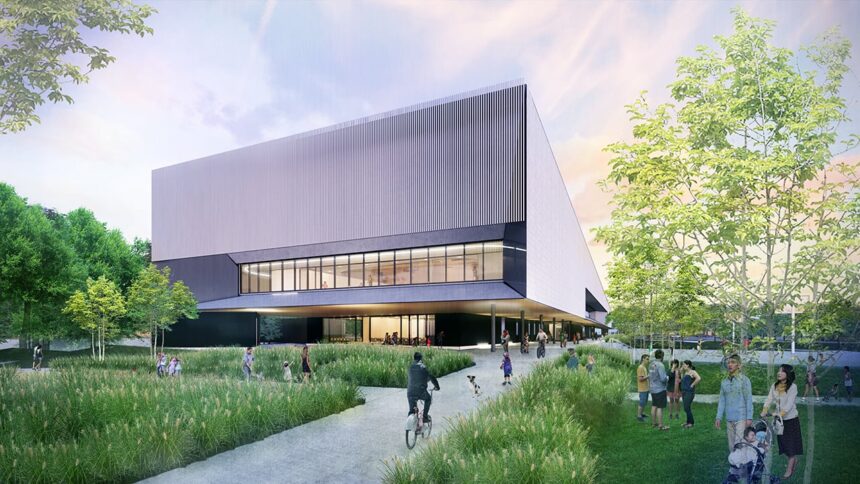The gleaming solar panels that crown Toronto’s newest public swimming facility catch the morning light, symbolizing both innovation and controversy in the city’s approach to recreational infrastructure. The Parkdale Net-Zero Aquatic Centre opened its doors this week, showcasing cutting-edge sustainability features while drawing attention to the stark contrast with the Ford government’s contentious Therme spa development at Ontario Place.
“This facility represents Toronto’s commitment to building climate-resilient public spaces,” said Mayor Olivia Chow at the ribbon-cutting ceremony. “We’ve demonstrated that community amenities can serve residents’ needs while advancing our environmental goals.”
The $28.5 million aquatic centre, situated in the west-end Parkdale neighborhood, boasts impressive green credentials. The facility generates 100% of its electricity through rooftop solar arrays, utilizes rainwater harvesting systems for landscaping, and incorporates heat recovery technology that captures energy from shower drains to warm the pools. City officials project annual carbon savings equivalent to removing 120 cars from Toronto’s roads.
The contrast with the provincial government’s approach to recreational development could not be more pronounced. While the city celebrates this public investment, the Ford government continues to face mounting criticism over its partnership with Austrian spa company Therme Group at Ontario Place. That $350 million private development has sparked concerns about accessibility, with expected entry fees exceeding $40 per person.
“The aquatic centre shows what’s possible when we prioritize public access and climate action,” said Councillor Gord Perks, who represents the Parkdale area. “Every resident can use this facility for the standard city swimming fee of $3.25, regardless of income level.”
Environmental engineering consultant Maya Rodriguez pointed to the facility’s broader significance: “This project demonstrates that net-zero public buildings are both technically feasible and economically viable in Canada’s climate. The energy performance monitoring systems will provide valuable data for future municipal projects.”
The aquatic centre’s opening comes amid growing public scrutiny of the Ontario Place redevelopment. Recent polling indicates 68% of Toronto residents oppose the Therme spa plan, with concerns centered on privatization of public waterfront and environmental impacts of the large-scale construction.
“These two projects represent fundamentally different visions for our city,” explained urban planning professor Dina Graser at the University of Toronto. “One prioritizes public access and climate resilience, while the other raises questions about who benefits from development on public land.”
Community response to the new aquatic centre has been overwhelmingly positive. The facility’s first week of operation saw nearly 2,000 visitors, with particular enthusiasm for the zero-depth splash pad designed for young children and the accessibility features for mobility-impaired swimmers.
“My family couldn’t afford private swimming lessons,” said Parkdale resident Jamal Williams, who brought his two children to the opening day. “Having this world-class facility in our neighborhood means my kids can learn to swim without breaking our budget.”
The aquatic centre is part of Toronto’s broader Climate Action Strategy, which aims to achieve net-zero emissions for all new city buildings by 2030. Similar facilities are planned for three additional neighborhoods over the next five years.
As Toronto navigates the complex intersection of climate policy, public infrastructure, and private development, the question remains: will the success of projects like the Parkdale Aquatic Centre influence future decisions about how we develop our shared urban spaces, or will economic pressures continue to drive privatization of public amenities?


















